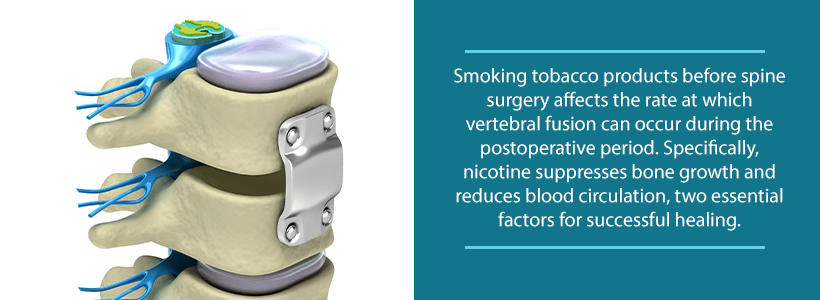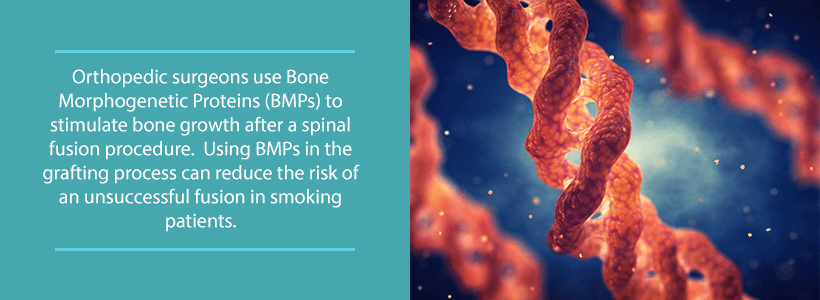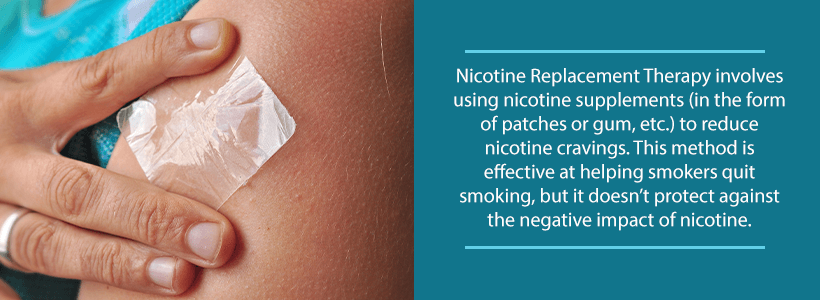If you’re dealing with frequent back or neck pain, your posture might be playing a bigger role than you think. Whether you're sitting at a desk all day or scrolling on your phone for hours,…
Research shows beyond any shadow of a doubt that cigarette smoking negatively affects spinal fusion surgery. In fact, the rate of non-fusion (or pseudarthrosis) in smoking patients is twice as much as that found in those who do not smoke. Of course, studies on non-fusion rates vary wildly as they depend on a variety of factors. That being said, there is most certainly a correlation between non-fusion rates and cigarette smoking. The prevailing theory is that nicotine adversely affects bone growth, which is a vital part of the fusion process.
Because nicotine is the problem here, that means that any tobacco product–patches, vaping, and so on–can affect fusion. This may be hard to hear, as there are many people who have been smoking for decades. However, it is absolutely vital to quit smoking if you have a fusion procedure planned ahead of you. If you cut back on tobacco products or use substitutes instead, there is still a small chance that you may end up back in the operating room.
Smoking and Spinal Fusion Surgery
As we have already established, nicotine affects the bone healing process as well as fusion. Additionally, the use of other tobacco products such as patches and e-cigarettes are either known or suspected to cause the same problems. The effects of the latter are not exactly known yet, so medical experts still suggest eliminating e-cigarette use as well. Additionally, once the patient has undergone spinal fusion surgery, doctors recommend ceasing to smoke for at least 6 weeks to avoid postoperative complications. Similarly, medical experts also suggest that the patient stops smoking at least a month prior to the procedure. Obviously, doctors urge even more strongly that you quit altogether, but that is another story.
Tobacco products do not just affect fusion, they also affect blood circulation in smaller vessels. Blood circulation plays a vital part in carrying oxygen and nutrients to hungry cells. In the context of the spine, reduced circulation has a particularly harsh effect on the shock-absorbing spinal discs. When blood flow reduces, less oxygen and nutrients are able to travel to the discs. Smoking also deters wound healing after surgery, leading to a higher risk of infection
It is important to mention that not all doctors require tobacco cessation prior to fusion. Instead, they may recommend that a patient quit smoking to avoid failed back surgery syndrome. If a patient has particular trouble with dropping the habit, then their doctor will assist them in any way possible. For one, doctors address wound complications via minimally invasive techniques. As far as fusion goes, doctors are able to optimize the process by using bone morphogenetic proteins (BMP), which encourage bone growth.
Use of BMPs in Spinal Fusion Surgery
BMPs are one of the newest approaches that doctors use to help mitigate the risks associated with smoking before spinal fusion. These proteins are known for their ability to promote bone and cartilage formation. For this treatment, the doctor places the BMP before the procedure with the goal of enhancing bone growth. More specifically, the goal is to accelerate bone growth beyond what would be considered normal bone growth from autografting.
So far, studies show that BMPs help the success rate of fusion procedures in patients who smoke. One such study shows that out of a group of patients who were followed for over two years, 95% of smokers had a successful procedure. This number is much higher than groups of smokers that did not have BMPs and suggests a strong correlation. It, however, is still important to note that even though these fusions were successful, the results were not nearly as positive as the non-smoker fusions. For non-smokers, the fusion procedures showed measurably higher functionality and symptom alleviation from chronic back pain.
Difficulty Of Quitting After Surgery
If the patient has not quit smoking before fusion surgery, then it is most likely that they will continue to smoke afterward. In most cases, patients will either continue smoking or quit for only a brief period of time.
Post-operative smoking cessation is incredibly difficult for a variety of reasons. The main reason for this is that the recovery period from a spinal fusion is very hard on a person. It is stressful, both physically and mentally. And, many people smoke in order to reduce such stressors. Additionally, recovery from any medical procedure is hardly exciting or fun. It is difficult for some patients to pass the time, so they may look to cigarettes as a means of handling boredom or dealing with stress.
It is possible to decrease the chance of post-operative smoking, and that is by quitting as soon as possible. Studies show that the longer a person has been off cigarettes, the easier it is to stay off cigarettes. This is a useful piece of advice for patients preparing for surgery, as well as for the post-operative doldrum.
How To Quit Smoking
There are many different ways to quit smoking, but by far the most common method is cold turkey (with no outside help). In fact, nine out of ten people try to quit smoking this way before trying anything else. Unfortunately, only a small minority (around 5% to 7%) are actually successful with this method. It certainly doesn’t hurt to try this method, but it is important to understand that it likely will not work for you.
Cognitive Behavioral Therapy
This method involves receiving advice from a specialist or guidance counselor to find useful coping techniques for you. The goal is to discover what your triggers are (what makes you reach for a cigarette) and how to avoid those situations. Sometimes, however, those situations are not avoidable. In these cases, the counselor will guide you with coping mechanisms for dealing with these cravings.
Smoking cessation programs are also known to yield good results when it comes to kicking the habit. Cessation programs are very similar to cognitive behavioral therapy in a lot of cases, with the difference being that they are conducted in a group environment instead of on a one-on-one basis.
Nicotine Replacement Therapy
This method is more of a supplementary treatment that patients can use to get off on the right foot. For patients who are going to undergo spinal fusion, it is important to understand that nicotine is still harmful. That being said, this method does help smokers quit cigarettes. This is especially true when patients use this method in tandem with cognitive behavioral therapy. Nicotine replacements come in a variety of forms, such as gum, patches, and lozenges. The key to this method is to think of it as a temporary crutch, and not a full-time replacement.
Medication
Prescription medicines such as Chantix or Wellbutrin are known to help smokers deal with the cravings and withdrawal symptoms of cessation. Additionally, these medications contain no nicotine in them and thus are not a form of nicotine replacement therapy. Ask your doctor about these medications, because they may or may not be right for you.
Other Methods
Exercise is a well-known aid when it comes to smoking cessation and is probably the most effective natural treatment. Though not as documented, many people claim that acupuncture and meditation have helped them kick the habit. Ultimately, the best approach for you will depend on your personal preferences. Any of these methods listed here are very effective supplementary treatments to any of the other techniques detailed above.
If you need spinal fusion surgery, please contact us at (855) 853-6542. OLLS is regarded as the best spine center in Florida for minimally invasive surgery, and its employees are well-versed in conservative methods. The back doctors at OLSS will go above and beyond to ensure that you receive a treatment plan that serves your specific needs–and this includes helping you receive the resources you need to quit smoking before fusion surgery.




